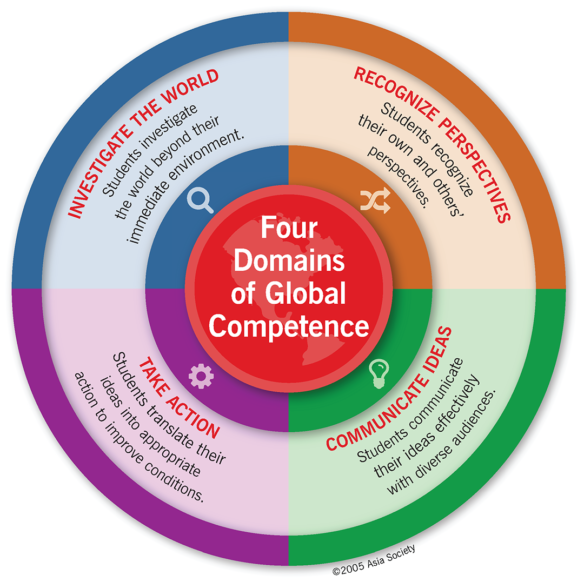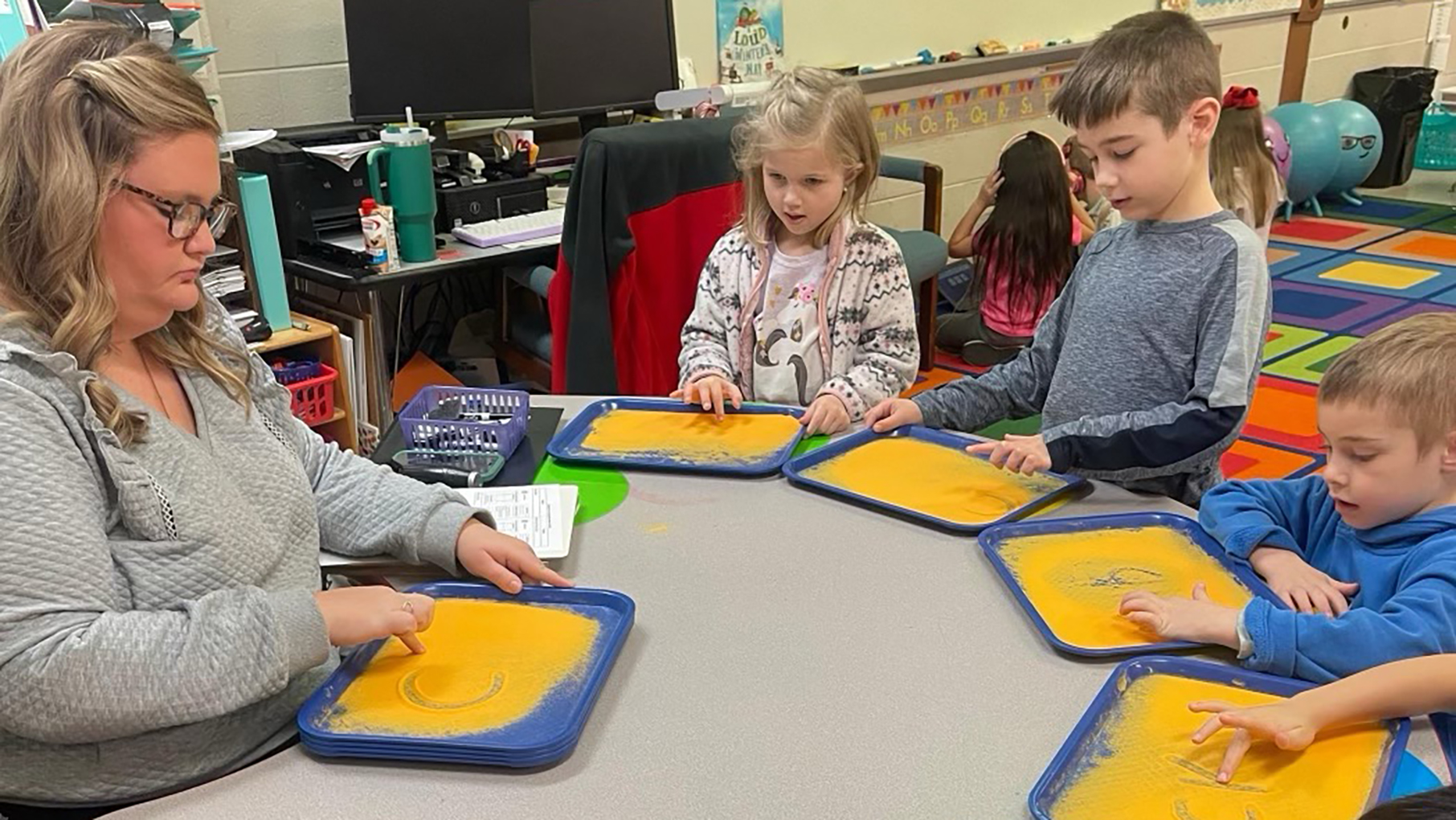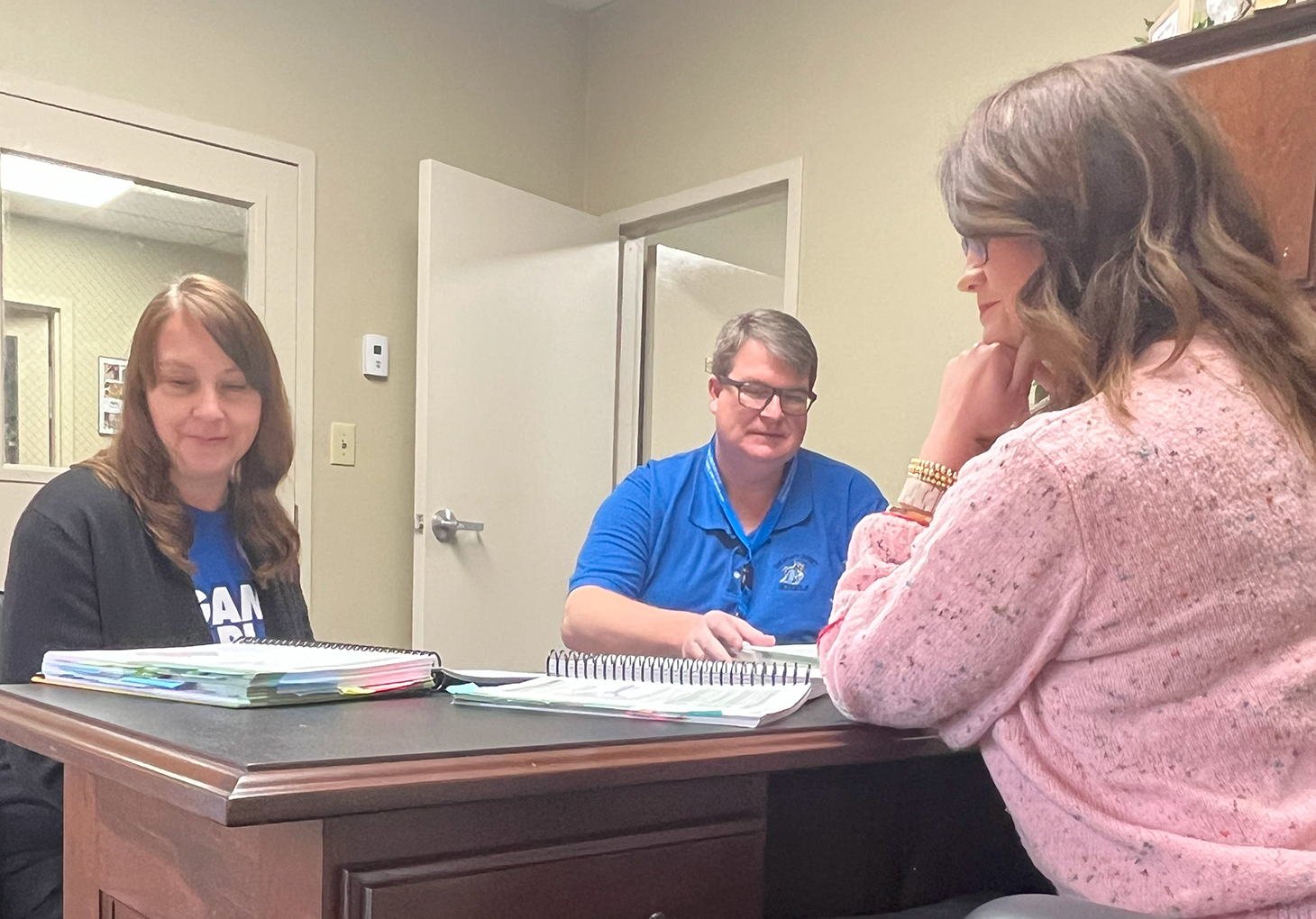
Whitney Hamilton
I came to the Kentucky Department of Education ready to work with the English language arts (ELA) team. I was prepared to brainstorm with my new colleagues about literacy instruction – reading, writing, listening and speaking – and how we can support ELA teaching and learning in Kentucky.
Coming from years of teaching 3rd-grade reading, I had experience integrating science and social studies into my reading block – like many of the teachers who are reading this right now. I even made connections to other disciplinary learning during math time, so I felt ready to collaborate with the other content area consultants.
Things happened mostly as I expected.
Not long after getting my cubicle set up, I met the department’s world languages consultant, Alfonso De Torres Núñez. He wasted no time educating me about “global competency” and explaining to me how our areas – world languages and ELA – so closely align. I was intrigued and inspired by the simplicity of his message: “Whether in English or in a world language, it is about communication and cultural understanding between people after all.”
I knew about world language courses and global competency. The school where I taught prior to joining KDE had a world languages teacher for a few years, but my knowledge still was limited. I had been so busy with my own instruction, it was not until I spent time with Alfonso that I came to fully recognize my ability as a literacy teacher to embed global competency within ELA instruction.
I mentioned science, social studies and math because I had collaborated with those teachers. But what about global competency? Where does global competency fit within ELA? How can we develop globally competent readers and writers in an ELA setting?
Let’s begin with a concrete explanation of this phrase, global competence. Being globally competent means having the knowledge, skill and disposition necessary to be successful in an interconnected world. Students who are globally competent:
- are aware of and curious about the world around them and seek to understand how the world works;
- recognize and respect their own and others’ perspectives;
- can communicate their ideas effectively to diverse audiences; and
- can make a positive difference by taking action that results in the improvement of something.
The Asia Society has created the visual below to aid in our understanding of what it means to be globally competent.

The domains in the diagram fit seamlessly into ELA and help us answer the questions at hand, “Where does global competency fit within ELA? How can we develop globally competent readers and writers in an ELA setting?”
I have reflected on my own ELA teaching practices and searched for resources that would help me answer these questions. Because I found so much, I have organized the best of my findings into two “How to” categories: 1) intentional text selection and 2) planning with a global lens.
How do you develop globally competent readers and writers in an ELA setting?
Text selection
- A very common, but also very effective, way is to intentionally choose texts that expand the scope of reading in your classroom to include works from around the world, both informational and literature.
- Use close reading for comparative analysis to help readers recognize and consider perspectives.
- Choose texts with similar themes to help readers makes sense of the world.
- Choose primary and secondary texts on topics of global significance. Think about relevant and age-appropriate local issues that may help students understand and connect with happenings across the globe, such as the need for clean drinking water.
Planning lessons with a global lens
- Design projects based on researchable questions that pose a globally relevant problem. Time for Kids and Scholastic News magazine are two sources available that may serve as springboards for research projects. Provide access to these and other international resources such as articles and video clips to identify and weigh relevant evidence; analyze, integrate and synthesize evidence; and to develop an argument based on compelling evidence. The goal is for students to reach a defensible conclusion of their own based on the evidence.
- Develop assignments that ask students to interview others about their perspectives on a given issue or analyze the perspective of an author or public figure. Students can then compare and contrast their own perspective on the given topic.
- Empower students to use a wide range of strategies – such as questioning, summarizing and restating – to help them comprehend, interpret and analyze their own culture as well as others through written and spoken language. Students in the upper elementary grades could self-select a text from several teacher-provided options based on the immigration experience of a person or group of people coming to America and form literature circles. The groups of readers could compare and contrast their readings, identifying themes related to the immigration experiences of the characters in the readings.
- Students could write up their work, such as those described in the previous two bullets, and post it online for learners near and far to read and synthesize.
For more information on what global competence is and to help identify your and your students’ cultural values while engaging with other globally minded educators, tune in to the Peace Corps’ webinar series. Another ideal site you don’t want to miss is GlobalEd, which is ideal for learning about ways to get your class connected with the world and thinking globally.
You also can visit Asia Society or Edutopia for resources and downloads to increase your confidence and application of embedding global competence into your ELA classroom.
The National Education Association Foundation has Global Fellow lesson plans you may find useful. There are a variety of topics and levels available that could be used as is or adapted to meet your grade level needs. Another site for lesson plans and multimedia resources for teaching and learning is Annenberg Learner.
One of my favorite resources is a social issues book list prepared by Teachers College Reading and Writing Project. The list includes books about topics that directly and indirectly relate to global awareness, such as feelings, courage, culture and diversity, having an impact on the world, overcoming obstacles and perception. This extensive book list provides a text level, whether it is high interest for boys, ISBN and a summary.
Take a look at readwritethink, an International Reading Association and National Council for Teachers of English site, for more ideas on developing globally competent readers and writers. Use “culture,” “diverse/diversity” and “world” as keywords in the search bar.
You may consider exploring even more lessons available at the Teaching Tolerance Website. The site is designed to search by grade level and topic as well as social justice domains and subjects. You may find it useful for brainstorming globally conscious topics for text selection and planning lessons with a global lens.
Finally, the Global Competence Matrix for English Language Arts gives us another look at how the four global competence domains and English language arts mesh. You can find it on page 104 of the publication by the Council of Chief State School Officers and the Asia Society: “Educating for Global Competence: Preparing Our Youth to Engage the World,” together with a checklist for teaching for Global Competence (page 71).
Please use all the ideas and resources provided in this article to develop your very own globally competent readers and writers.
Whitney Hamilton has served as an elementary literacy consultant for the Kentucky Department of Education in the Division of Program Standards since July 2017. Before joining KDE, she spent 15 years teaching 3rd-grade in Madison County. Her first 11 years teaching were in a self-contained classroom, while the last four years she taught English language arts, primarily reading. Hamilton earned her bachelor’s and master’s degrees in elementary education at Eastern Kentucky University. Literacy was also her content focus while earning her Rank I certification through the Continuing Education Option. She will complete her education specialist degree from Eastern Kentucky University in May 2018.



Leave A Comment